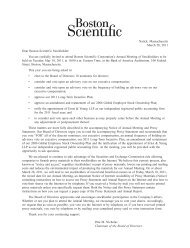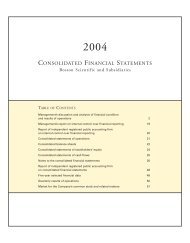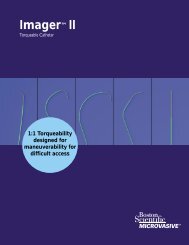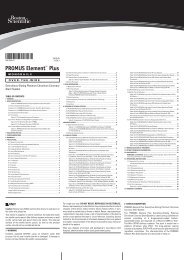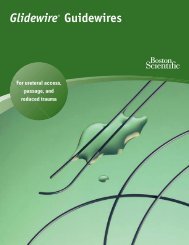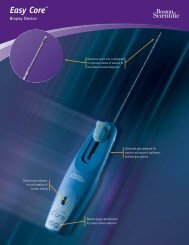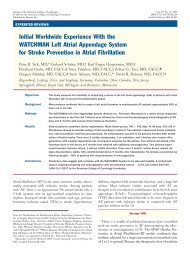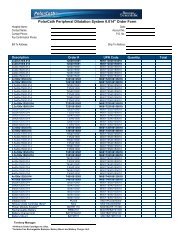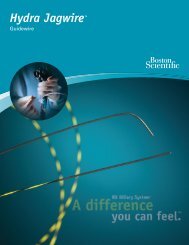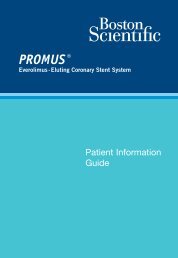Physician Reimbursement Primer for Cardiac ... - Boston Scientific
Physician Reimbursement Primer for Cardiac ... - Boston Scientific
Physician Reimbursement Primer for Cardiac ... - Boston Scientific
Create successful ePaper yourself
Turn your PDF publications into a flip-book with our unique Google optimized e-Paper software.
Chapter 2<br />
detail below). This payment is intended to cover all hospital expenses (overhead,<br />
capital equipment, supplies, etc.) with the exception of physician labor 3 .<br />
• Hospital outpatient—If a patient is treated in an outpatient setting, the facility is<br />
reimbursed through an APC payment system (explained in more detail below). This<br />
payment is intended to cover all facility expenses (overhead, capital equipment,<br />
supplies, etc.) with the exception of physician labor 4 .<br />
• <strong>Physician</strong>—<strong>Physician</strong>s receive payment <strong>for</strong> each CPT procedure code based on the<br />
Medicare physician fee schedule. These payments are usually based on the<br />
physician’s time, the complexity of the case, and other factors.<br />
The following chart summarizes the Medicare payment process. You may find it helpful to<br />
refer to this chart when reviewing the in<strong>for</strong>mation in this chapter about the different care<br />
settings, code types, and payment systems. (Note that fiscal intermediaries and carriers<br />
are in the process of being replaced by Part A/Part B Medicare Administrative<br />
Contractors, or A/B MACs.)<br />
Fiscal Intermediary<br />
ICD-9 Diagnosis<br />
ICD-9 Procedure<br />
MS-DRG<br />
Hospital<br />
INPATIENT<br />
Medicare Payment Process<br />
CMS Coverage<br />
ICD-9 Diagnosis<br />
CPT-4 &<br />
C-Codes<br />
APC(s)<br />
Hospital<br />
OUTPATIENT<br />
Carrier<br />
Fee Schedule<br />
ICD-9 Diagnosis<br />
CPT-4<br />
PHYSICIAN<br />
The<br />
above discussion is a brief overview of the three payment mechanisms. This guide<br />
would be incomplete if we did not provide you with further details on this topic. Below we<br />
revisit and explain each of the three payment mechanisms, using examples showing how<br />
each of them function. If you are satisfied with just a brief overview, then feel free to skip<br />
to the next chapter.<br />
Hospital Outpatient and Ambulatory<br />
Surgical Center Services<br />
Hospital Outpatient Prospective Payment<br />
System<br />
Medicare established the Outpatient Prospective Payment System (OPPS)<br />
to reimburse<br />
mainly <strong>for</strong> hospital outpatient services. It is called a “prospective” payment system<br />
because Medicare pays a pre-determined rate <strong>for</strong> each service or procedure based on<br />
the average costs it expects a facility to incur.<br />
Medicare classifies all services paid under this system into ambulatory payment<br />
classifications (APCs). Each APC contains procedures that are similar both clinically<br />
and<br />
in terms of the resources they require. Medicare then establishes a payment rate <strong>for</strong> each<br />
APC. Depending on the services provided, hospitals may be paid <strong>for</strong> more than one APC<br />
4 <strong>Physician</strong> <strong>Reimbursement</strong> <strong>Primer</strong> <strong>for</strong> <strong>Cardiac</strong> Rhythm Management



